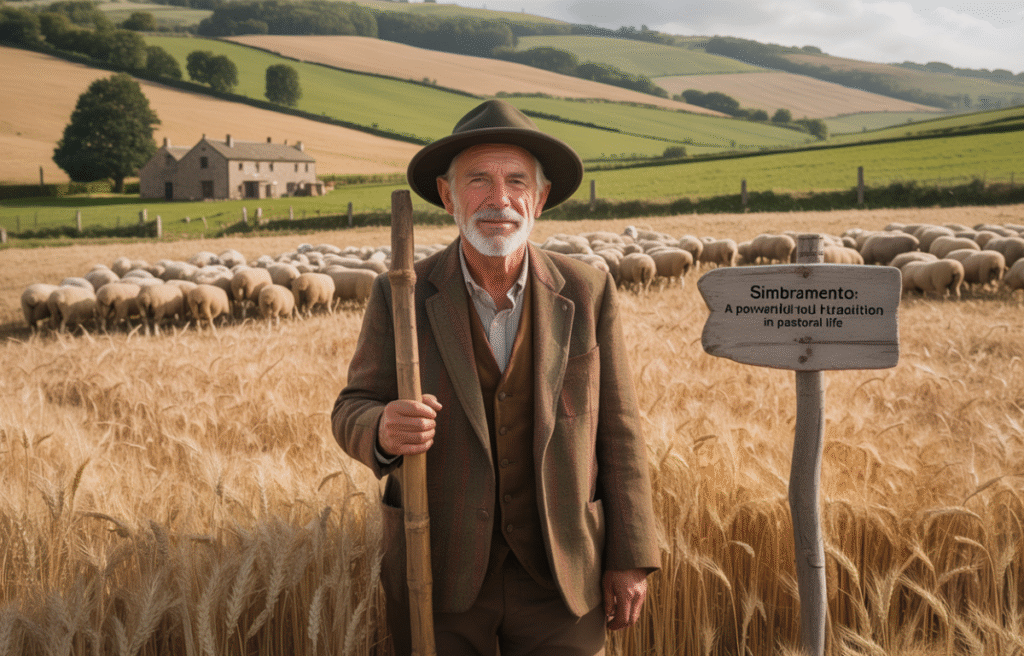-Simbramento, a term deeply woven into the rural identity of certain Italian regions, evokes images of livestock herds flowing across open meadows, shepherds guiding with skilled patience, and traditions handed down through generations. Though less known outside pastoral circles, simbramento remains a vital piece of Mediterranean agricultural culture and a powerful symbol of sustainable land stewardship.
While its practice has evolved over centuries, the essence of simbramento continues to reflect a rhythmic dance between nature, people, and animals—an ancient tradition that finds renewed relevance in today’s world of fast-paced living and environmental concerns.
What Exactly Is Simbramento?
Simbramento, at its core, refers to the seasonal gathering and movement of livestock from one grazing area to another, often between winter lowlands and summer mountain pastures. This act isn’t just a logistical necessity—it marks a significant transition in the rural calendar. Shepherds, farmers, and entire communities prepare for the migration with both practical strategies and emotional ceremonies.
Unlike the more widely known concept of transhumance, which describes the general practice of seasonal livestock migration across cultures, simbramento is rooted specifically in Italian regions like Sardinia, Abruzzo, and Molise. It signifies the starting point—the exact moment when herds are rounded up and the journey begins.
The Roots of a Tradition
Simbramento traces its lineage to pre-Roman times when early farmers and herders learned to adapt to harsh climates and limited pasturelands. As agriculture evolved, people understood that by moving livestock periodically, they could let pastures regenerate, improve animal health, and avoid the destructive consequences of overgrazing.
Over time, this practice became much more than agricultural strategy. It became a ritual, embedded with meaning and community spirit. The departure of herds often coincided with religious blessings, songs, communal meals, and superstitions to ensure safe passage and a fruitful season.
The Role of Shepherds in Simbramento
Shepherds are the heart of simbramento. They’re not just animal caretakers; they’re navigators of weather, terrain, and timing. Generations of knowledge guide their decisions—when to begin the journey, which routes to take, how to respond to environmental signals that modern GPS can’t interpret.
In many communities, shepherding is a respected way of life. Children grow up learning the sounds of bells tied to sheep and the cadence of their elders’ footsteps as they guide flocks through valleys and over mountains. Their stories, tools, and customs give simbramento a human face.
Livestock and Land: A Beneficial Partnership
The animals involved in simbramento—often sheep, goats, or cattle—are more than economic assets. Their seasonal movements actually benefit ecosystems. Grazing in new pastures reduces the buildup of parasites and overused soil, while manure left behind fertilizes the land naturally. This cyclical method of grazing supports biodiversity and aligns closely with modern principles of regenerative agriculture.
Moreover, animals that participate in this traditional practice tend to develop stronger immune systems and healthier physiques due to the diversity of their diet and the exercise from the journey. Farmers also benefit by producing higher quality milk, cheese, and meat—products that carry the flavor of the landscape itself.
Simbramento’s Cultural Importance
In Italian rural communities, simb-ramento is a moment of both labor and celebration. Families gather to share meals, bless the animals, and sometimes even hold music-filled parades as the flocks set off. These ceremonies aren’t merely decorative—they’re a cultural glue that binds communities together.
Folktales passed down over generations often center on simb-ramento. Myths of magical shepherds, talking animals, or protective spirits reflect the deep respect people had for this practice and the mysterious beauty of the landscape they traversed.
Even the language surrounding simb-ramento is rich with poetic imagery, a reflection of how much this process meant to those who lived by it.
From Tradition to Modernity
Despite its deep roots, simb-ramento isn’t just a relic of the past. While industrial farming and urbanization have changed the face of agriculture, some communities still maintain this tradition—either as part of daily life or through cultural preservation efforts.
In Sardinia and central Italy, for instance, simb-ramento is occasionally re-enacted through festivals or agritourism experiences. Visitors from cities and abroad are invited to join shepherds on part of their journey, learn about ancient techniques, and taste local cheese made from animals who’ve grazed on wild herbs and flowers.
These efforts not only preserve the tradition but also provide economic opportunities for small farms and rural towns. By turning simb-ramento into an educational and cultural attraction, communities breathe new life into old practices.
The Role of Women in Simbramento
Traditionally, men led the herds while women supported from the background. But history shows that women played a critical role—preparing food for the journey, caring for the young and the elderly, and maintaining the household during long absences. In many cases, they were the cultural stewards who kept the stories, songs, and recipes of simbramento alive.
Today, more women are stepping into leadership roles in farming and animal husbandry, and their presence in simbramento is becoming more visible. Their involvement represents a new chapter in the tradition—one that honors the past while embracing inclusion.
Ecological and Economic Value of Simbramento
Simbramento brings balance to both land and life. Environmentally, it allows grasslands time to recover and reduces dependence on artificial feeds and fertilizers. Economically, it supports artisanal food production, sustains heritage livestock breeds, and encourages rural tourism.
In a time when climate change and unsustainable practices threaten agriculture’s future, simbramento offers a time-tested model of harmony between nature and productivity. It promotes resilience, not just in soil and animals, but in the communities that depend on them.
Modern Threats to Simbramento
Of course, simbramento isn’t immune to modern pressures. Urban sprawl, disappearing pastures, climate volatility, and the aging population of farmers all pose serious challenges. Younger generations often leave rural life behind in pursuit of city jobs, and with them, the knowledge and customs of simbramento fade.
There’s also a risk of commercialization diluting the authenticity of the practice. As tourism grows, some fear that simbramento may become more performance than practice. Balancing authenticity with economic opportunity is crucial.
Preserving a Living Heritage
Efforts to protect and revitalize simbramento are underway. Local governments, cultural organizations, and agricultural cooperatives have begun to document oral histories, restore grazing paths, and support small-scale herders through grants and mentorship programs.
UNESCO has also recognized transhumance (of which simbramento is a form) as an intangible cultural heritage, shining international light on its value. Schools in rural regions now teach students about the heritage of their land, helping to foster pride and curiosity in younger generations.
Simbramento and the Road Ahead
The future of simbramento rests not in nostalgia but in adaptation. As society becomes more aware of environmental degradation and the need for cultural identity, practices like simbramento may find renewed purpose.
By connecting modern needs with ancient wisdom, simbramento offers a pathway not just to preserve a tradition—but to enrich our understanding of what it means to live in tune with the land.
Frequently Asked Questions
What does simbramento mean?
Simbramento refers to the seasonal gathering and migration of livestock, marking the beginning of their journey between pastures in Italy.
Is simbramento still practiced today?
Yes, although less common, simbramento continues in certain Italian regions, often tied to cultural festivals or sustainable farming efforts.
How does simbramento benefit the environment?
It supports biodiversity, prevents overgrazing, and enhances soil fertility through natural manure distribution and grazing rotation.
What animals are involved in simbramento?
Sheep, goats, and cattle are the most commonly moved during simbramento, depending on the region and type of agriculture.
Can tourists experience simbramento?
Yes, in regions like Sardinia and Abruzzo, tourists can join parts of the migration or visit during festivals celebrating simbramento.
Why is simbramento culturally important?
It connects communities to their land, history, and identity through shared labor, stories, and celebration.
Conclusion
Simbramento is more than a seasonal task—it’s a profound expression of life aligned with nature’s cycles. Through generations, it has taught patience, stewardship, and respect for the delicate balance of ecosystems. Today, as we search for sustainable ways to live and farm, simbramento stands as a powerful reminder: sometimes, the way forward is to walk in the paths of our ancestors.







